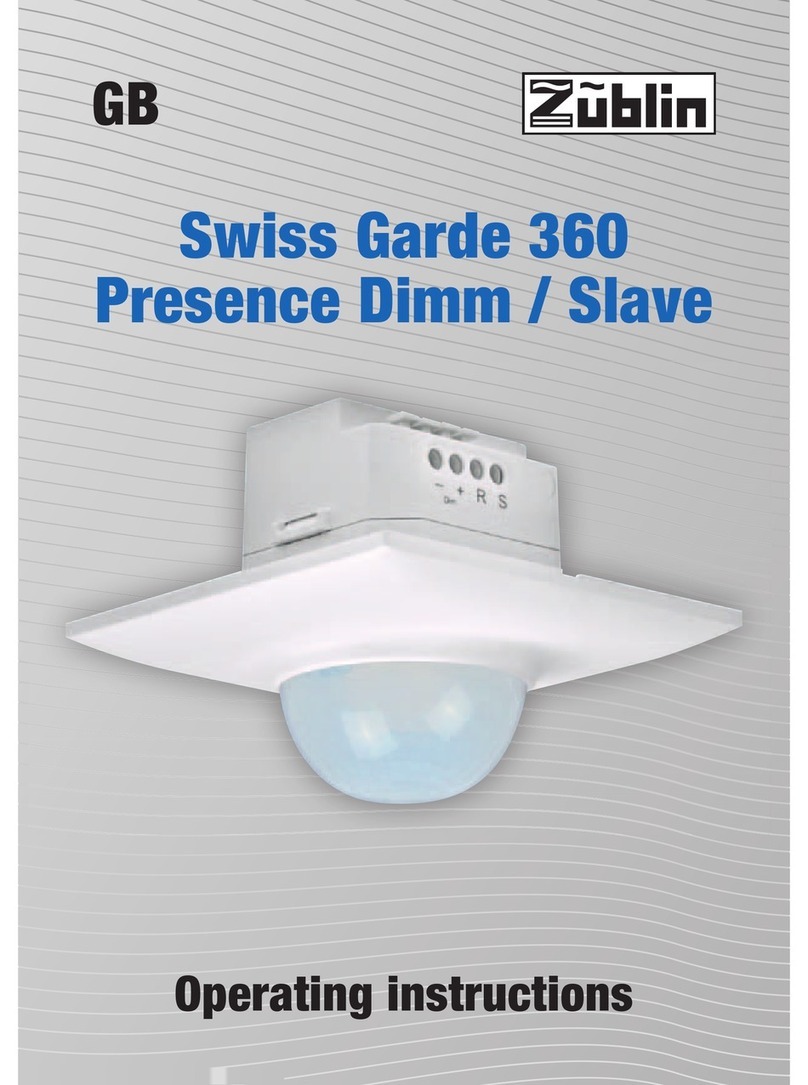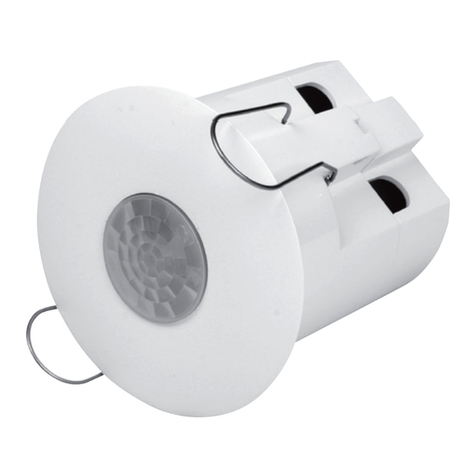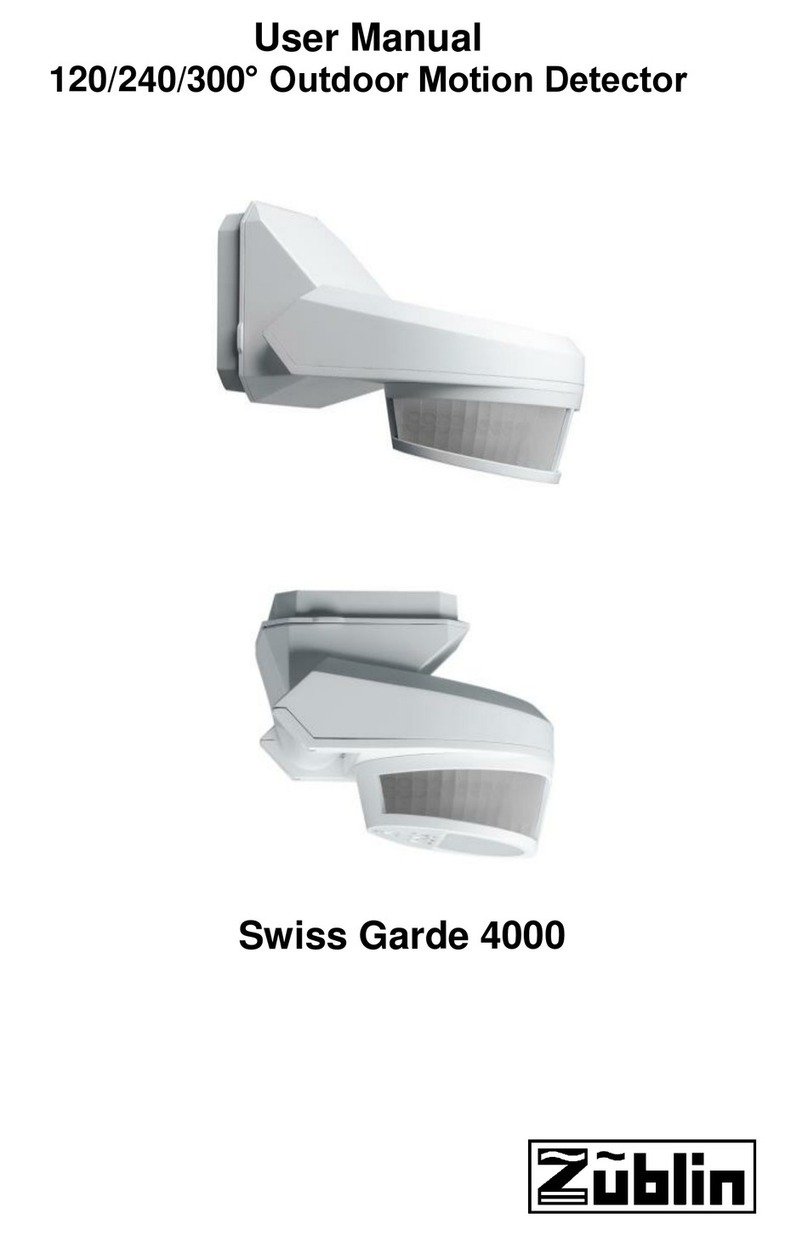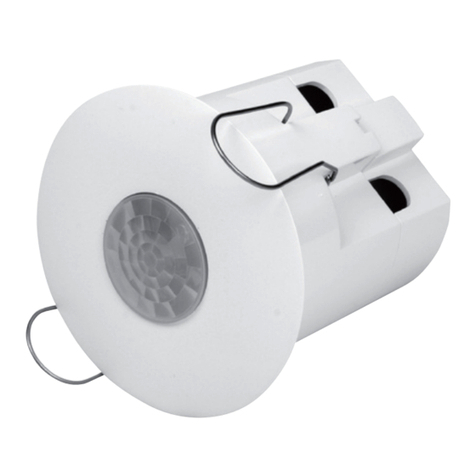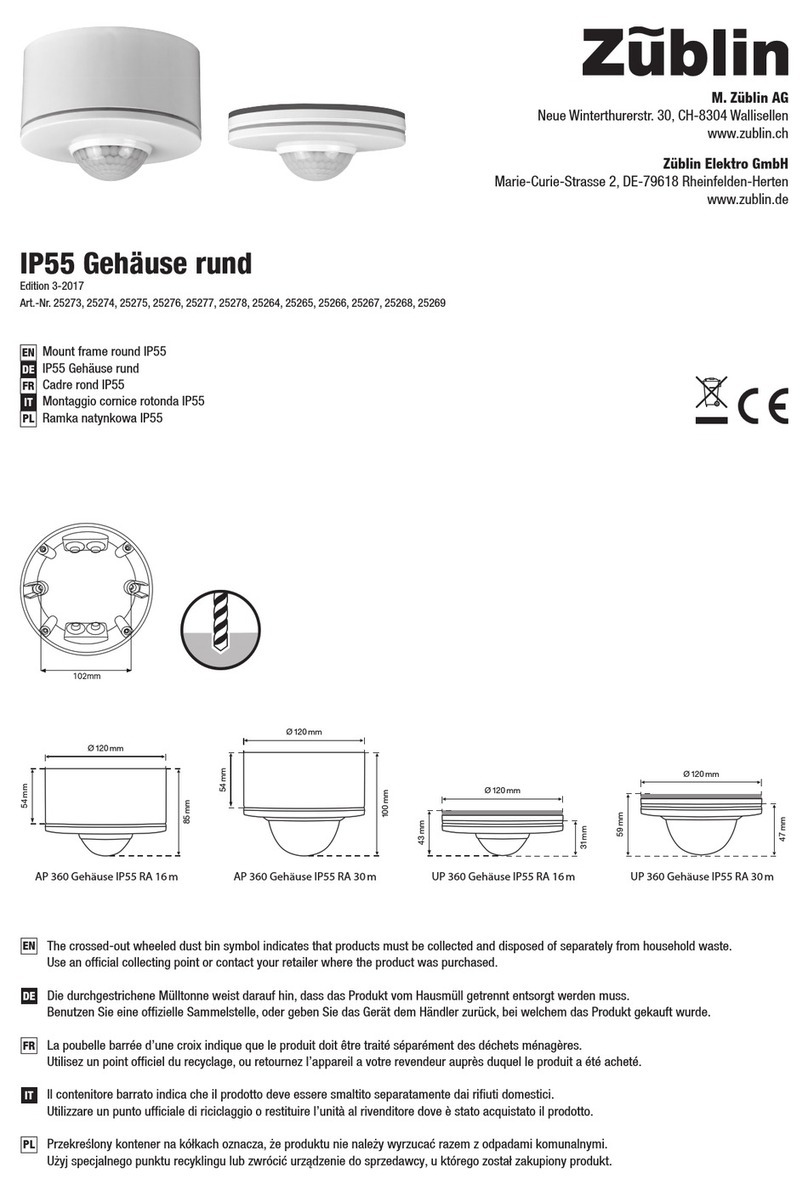Important (installation) notes
- Before starting to install the motion detector, ensure that the 230-volt
power supply cable is de-energised using a voltage tester.
- Any installations must be completed by trained specialists.
- The MZ 5000 motion detector is designed for internal and external
applications.
- If any functional faults, such as a continuous light or the light
switching on/off independently, please refer to "Troubleshooting" on
page 25.
Installation
The ideal installation height is 2.3 to 3 m, however, the MZ 5000 can
be used at heights of approx. 1.2 to 4 m. Fix the mounting base at the
required installation height (wall, corner or ceiling installation) and
thread the cable through the membranes into the base. Ensure that no
water can run along the cable duct in to the housing.
Close the motion detector as follow:
Phase (L) Neutral conductor (N) Switched phase (L1).
Relay 2 (designated by 5A NO), the isolated contact that functions
independently of the brightness, can be used to control the heating,
ventilation, sounds, etc (max. switching capacity: 5A).
Connecting electrical loads
High starting currents shorten the service life of the relay integrated
into the detector. To ensure the relay (16A) is not overloaded, please
observe the technical specifications (especially with regard to the
starting current of, for example, compact FL, FL and energy-saving
lights, etc., or this type/standard of compensation) provided by light
and lamp manufacturers. We recommend switching a maximum of
three to four motion detectors in parallel, if the number of switching
cycles is above average or in the event of increased (inductive) loads,
we recommend using the short pulse function on the motion detector
and switching the load via an external staircase timer switch or
contactor.
7






